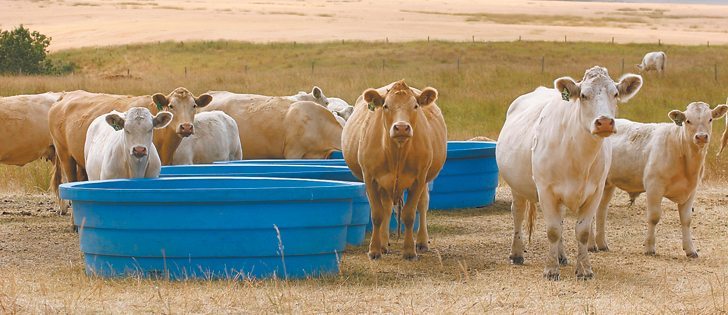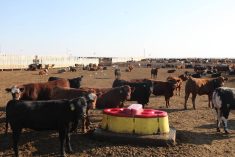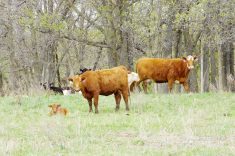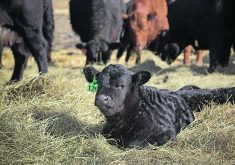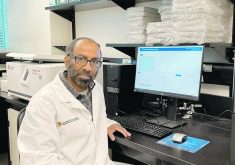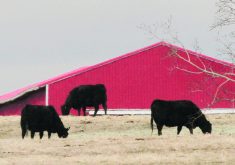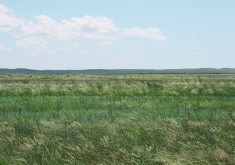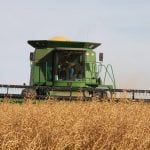Meet the team at Lacombe, Alta. | Agriculture Canada’s research centre has a century-long history of innovation
LACOMBE, Alta. — The contributions of a small team of meat scientists toiling in the laboratories at Agriculture Canada’s Lacombe Research Centre have often gone unsung.
Over the years, the internationally trained scientists have been responsible for developing a beef grading program and inventing food safety systems employed throughout North America.
They have also made landmark discoveries to make red meat a more healthy, high quality product by collaborating with researchers from Alberta Agriculture and the University of Alberta.
The centre is located on the outskirts of Lacombe and has been in operation for more than 100 years.
Read Also

Canada told trade crisis solutions in its hands
Canadians and Canadian exporters need to accept that the old rules of trade are over, and open access to the U.S. market may also be over, says the chief financial correspondent for CTV News.
Work starts with the animal acting as a living laboratory, with researchers evaluating its reaction to feed rations, handling, disease and stress.
The research herd of 350 crossbred beef cows and an 80 sow unit are raised in a commercial setting.
The centre has also worked with sheep, bison, deer, elk, emu and ostrich.
“Everything is done in a commercial type manner. That’s one of the things we try to do so any of our research will be transferable to industry,” said Jennifer Aalhus, who studies meat quality and sensory evaluation.
Canada must fit the quality specifications of customers at home and abroad. As well, the industry needs to continue to promote the healthfulness of red meat, which can be proved with research.
“We are an export country exporting to different markets and you better understand what those markets are. Different consumers prefer different things,” Aalhus said.
Those willing to do the extra work on the farm could perhaps be re-warded if scientists can prove the healthful benefits of meat achieved with specialized feeding regimes or genetic improvements.
Scientists such as Mike Dugan and William Caine have developed strategies that use distillers grain to improve beef’s trans fatty acid composition and oilseeds to increase polyunsaturated fatty acids.
Pigs have been fed conjugated linoleic acid to reduce carcass fat and increase lean meat, while omega 3 pork has been produced by feeding pigs a flax based diet.
Caine, who studies meat bionutrients and health, said the red meat industry has been demonized in the media for many years.
“More recent research has shown that there are very important health products in meats,” he said.
“Can we develop healthy beef and if we can, what is its impact on the human condition if you eat it? We hope we can show that eating beef is good for you.”
At the molecular level, scientists such as John Meadus are narrowing down quality to the lowest denominator and looking at the benefits of various fats such as CLA, omega 3 based on DHA, fish oil and vitamin E.
“These are all factors that have an influence on the cellular level,” Meadus said.
Modern producers often hope to improve meat quality through breeding and analyzing the DNA of individual breeding animals.
The science of phenomics has emerged to measure animals’ physical traits, environmental influences and DNA.
DNA information accounts for only 30 to 40 percent of carcass quality with the rest of the influence coming from environmental factors such as climate, feed and farm management.
The chances of producing better beef increase if these factors are combined.
“You can have the best genetics in the feedlot and then you go to the plant and the way they handle the carcasses has an influence,” said Manuel Jaurez.
“Genomics has information but it cannot solve everything by itself,” he said.
Jaurez said the evolution of the Beef Information Exchange System (BIXS) has taken his research to the next step because it has the ability to provide thousands of data points on carcass results from the major packers in the last year.
“Now you have thousands of animals with genomic information plus the carcass,” he said.
“We can get information from the cow-calf to the feedlots and the carcass from the plant. Once you have that information you can sort quality.”


